17 Mar How to photograph jumping spiders – 6 best tips
If you are new to photographing jumping spiders or just want to improve your approach, i would like to share some of my best tips from over 10 years of photographing these interesting subjects.
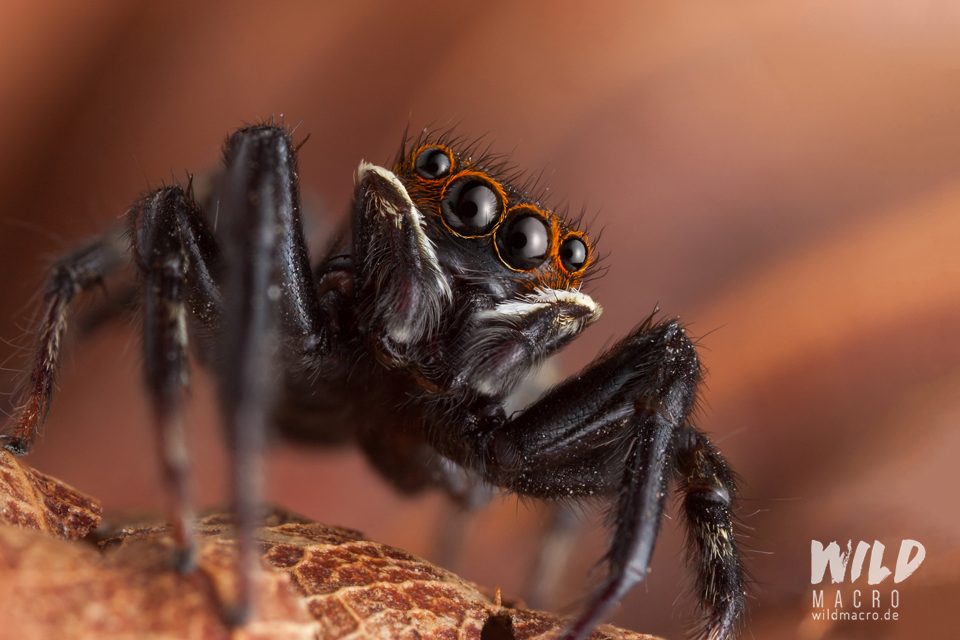
Jumping spiders have gained a lot of popularity lately, even outside the scientific fields of biology or arachnology in particular.
With their unique appearance within the group of spiders they are the perfect ambassadors to turn fear to fascination, as they are widely considered to be almost cute looking spiders.
Thanks to the popular animated character Lucas the spider, jumping spiders have been introduced to a broad public, after the release of the short clip series on Youtube in 2017.
Big species like Phidippus and Hyllus are bred and kept as pets, even outside the hobby now.
There is barely any doubt that Jumping spiders are favorite subjects when it comes to macro photography.
Their big eyes, fluffy appearance and often subjective interest for the photographer result in spectacular photos at high magnification.
Here are my 6 best tips for Jumping spider macro photography
Focus on the eyes
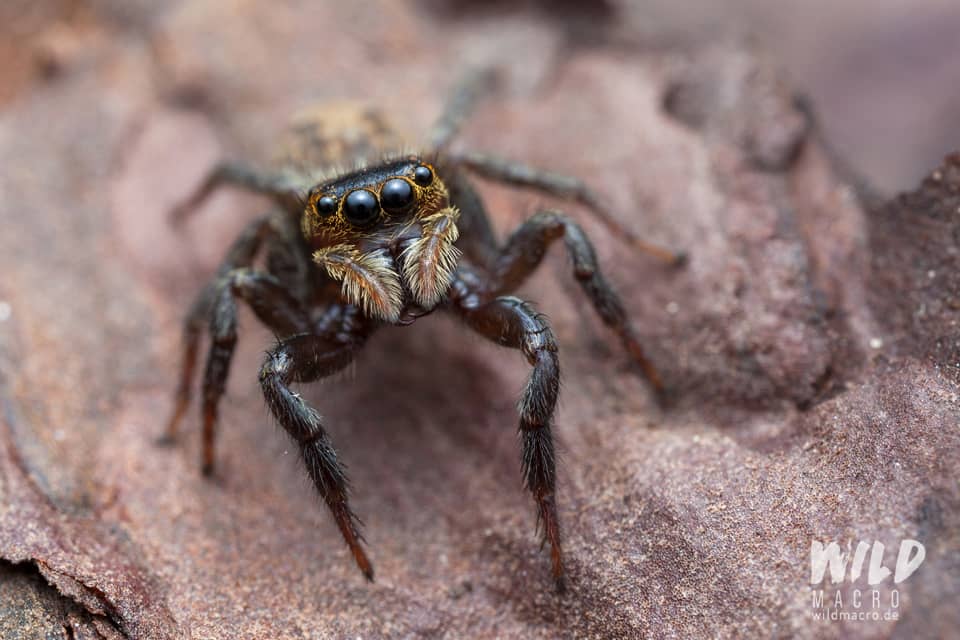
Jumping spiders are predators and have great eyesight.
They seem to assess a situation when encountering new moving objects and will often sit still, while tracking potential prey or threats with their big eyes.
We can use this as an advantage as the jumping spider will often turn towards the camera lens and stare right at it.
This makes for some intense portrait photos.
As we are used to feel emotional connection primarily when looking into another person´s eyes, the same principle also applies to animals.
Putting the focus on the spider´s eyes can evoke an emotional reaction in the viewer.
Since we often have to work with the limitations of a very thin depth-of-field in macro photography, the thin layer of focus should be placed on the most important part(s) of the subject.
This is similar to people portrait photography, where the focus is also mostly on the eyes.
Get low
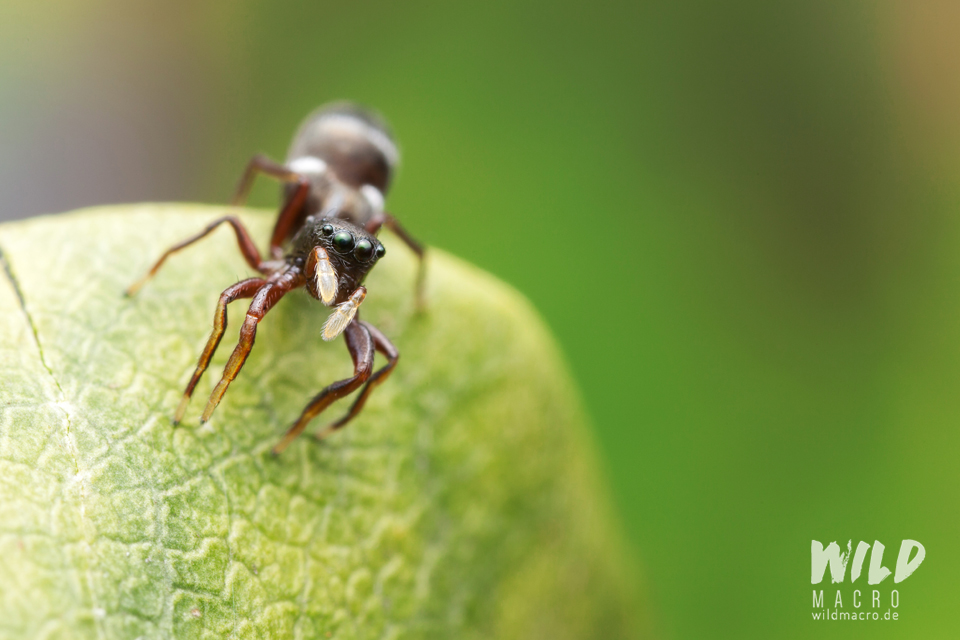
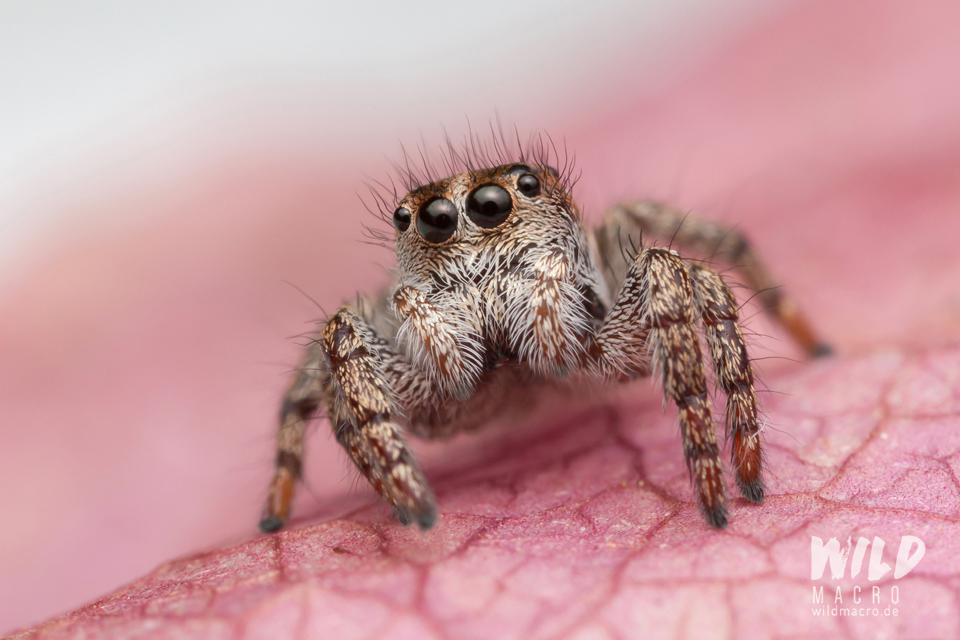
For intense portraits, try getting as low as possible when photographing a jumping spider.
Getting to eye level (or even lower) with these spiders will often result in a direct view of their fascinating and big eyes.
Being curious arthropods, they will usually look straight back at the beholder and enable you to take a great portrait shot.
Remember that the eyes can establish an emotional reaction and/or connection.
Try different angles
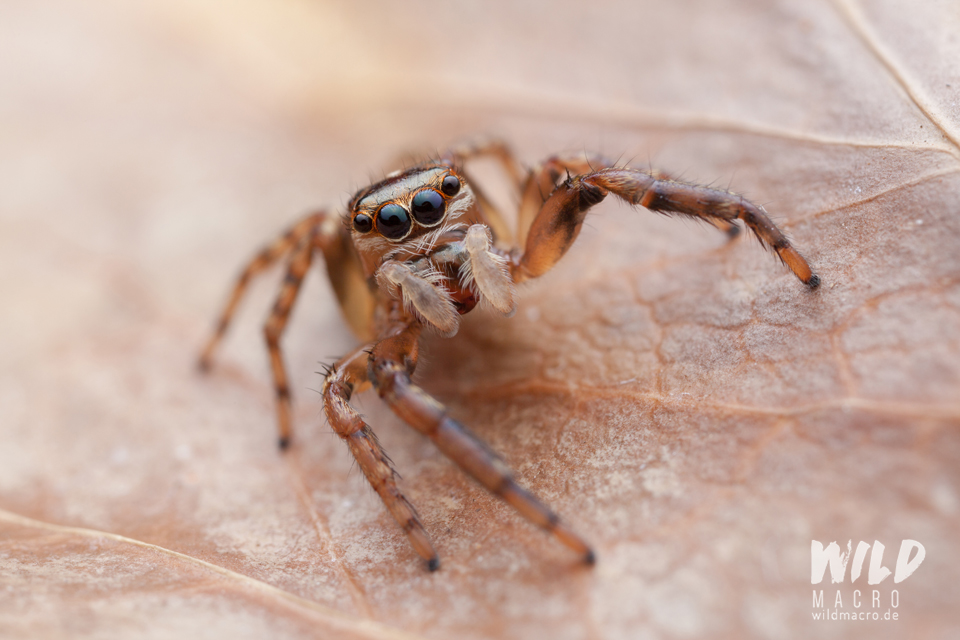
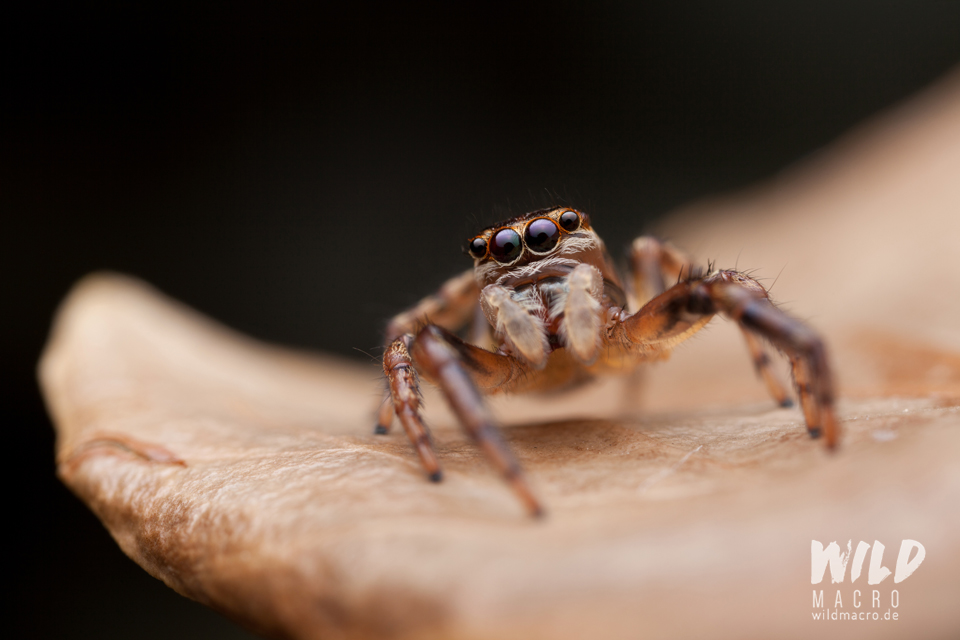
If you are not only aiming for a straight-on portrait shot, try varying the angles.
This way you can show the many interesting features of the spider and create a set of photos that will visually describe the species very well.
It will also give your photos a very different look just by adjusting the angle you photograph at, as you can see in the example photos above.
It is always good to have these photos for identifying purposes later on.
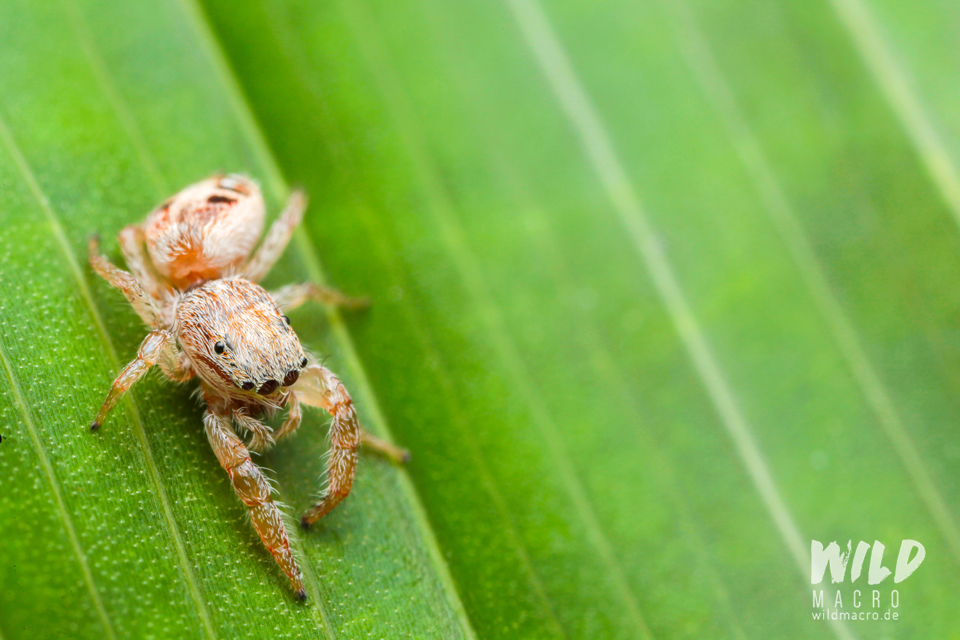
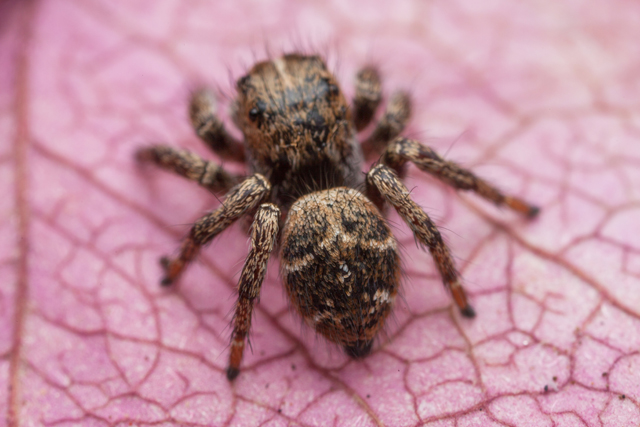
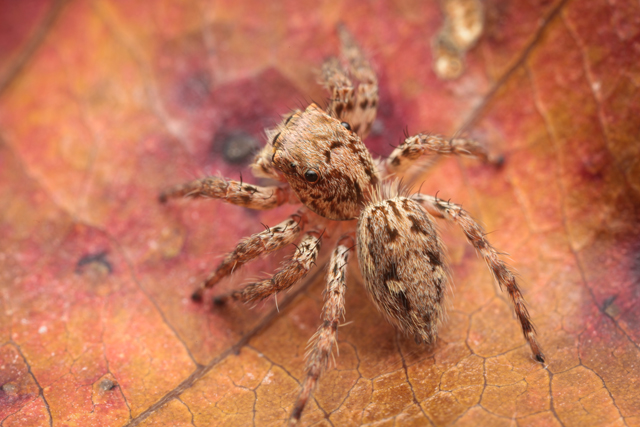

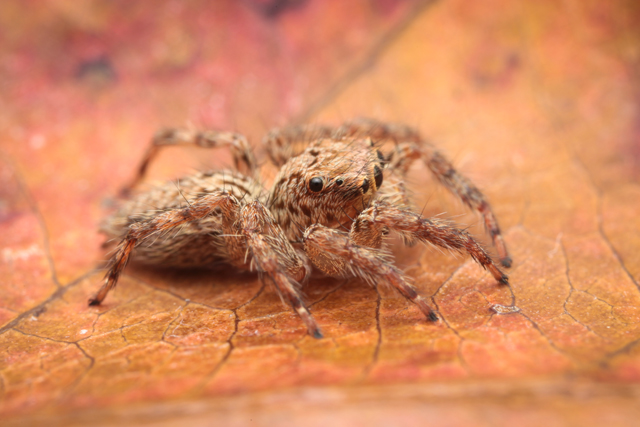
Use a flash and a diffuser
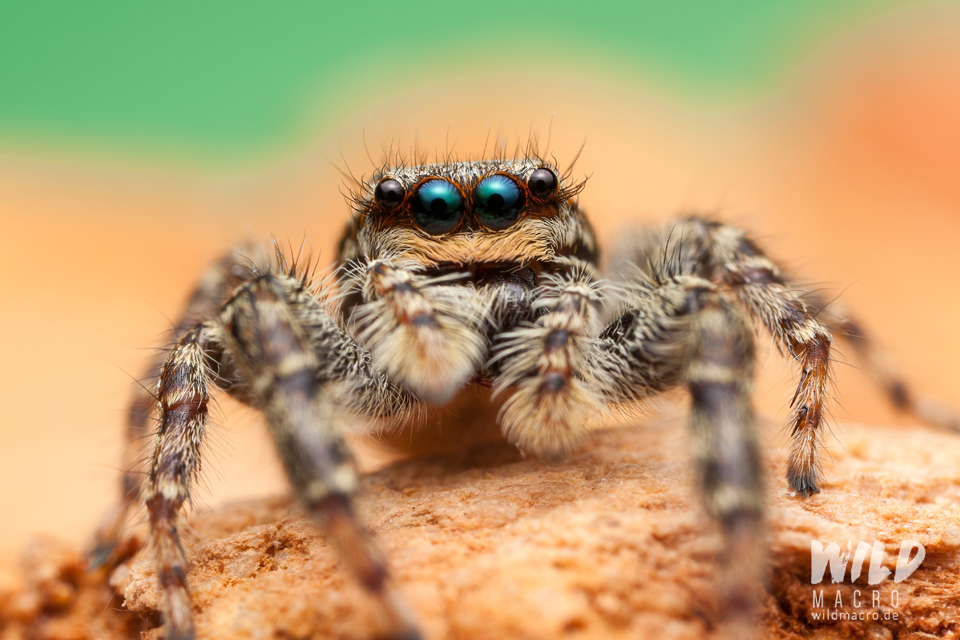
Photographing jumping spiders can be challenging in many ways:
The spiders are very small, they are very active and often skittish, they rarely ever stop moving.
Many species live in leaf litter or in other places that have only limited access for your camera gear.
Getting sharp photos with natural light is almost impossible.
Using a tripod is not an option and we have to be able to quickly react to their movements, so photographing handheld is the way to go.
To illuminate the spider and scene we need a flash. This solves all of the above mentioned problems.
Using a flash gives us a mobile setup and enables us to freeze the spider´s motion for a perfectly sharp shot.
To prevent harsh highlights we will have to use a diffuser to produce soft light.
A reflector-diffuser combo will direct the flash to where we need it (right in front of our lens) and the diffuser will soften it and create a bigger and nicer reflection in the spider´s eyes, as seen in the photo above.
You can read more about why it is a great advantage to use flash for macro photography in another blog post here.
Find feeding Jumping spiders with prey
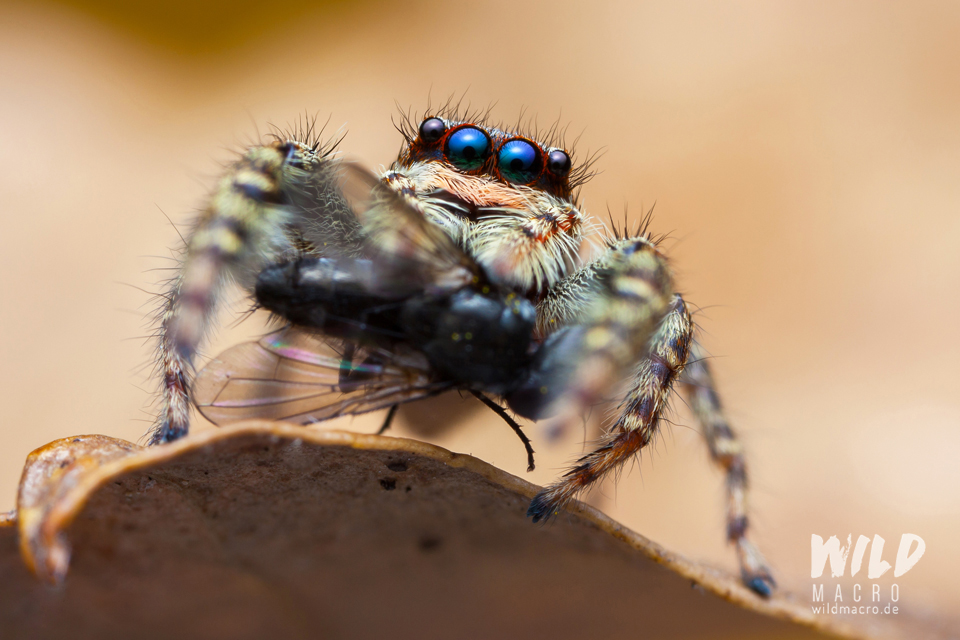
Although jumping spiders are generally very curious and might let you take photos of it, there are some species that are very skittish.
It also depends on the situation and the spider´s level of stress.
If you manage to find a jumping spider that has caught prey and is feeding on it, your chances to get photos of it are a lot higher.
It will often keep on feeding instead of rushing away as it would do without prey.
Learn about and understand them and their behavior
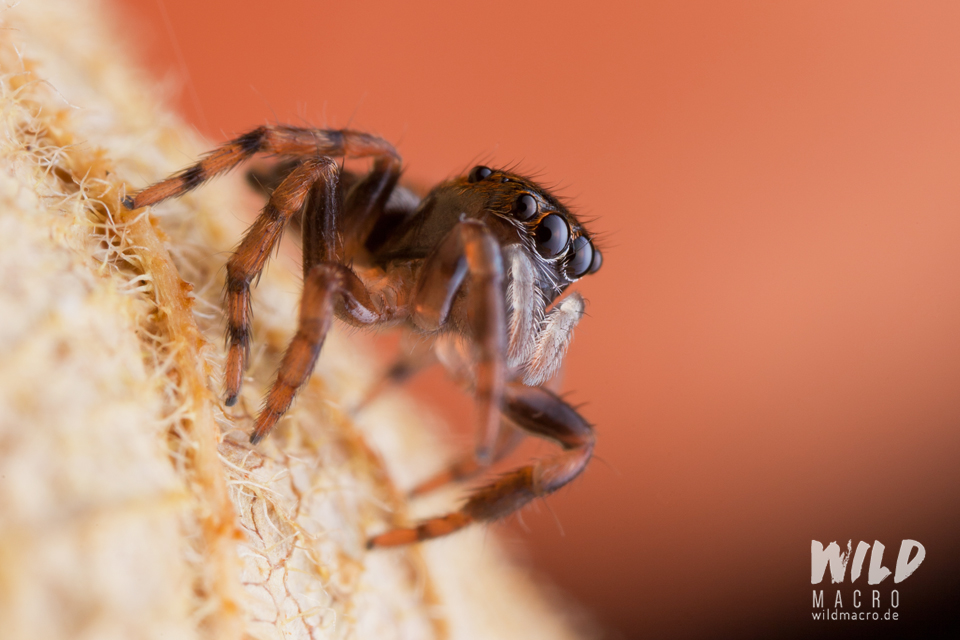
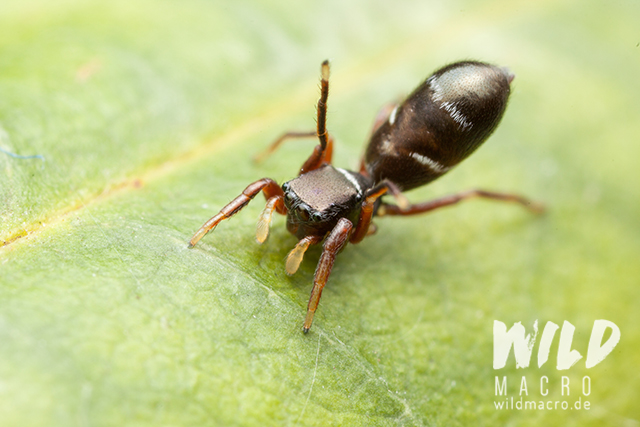
Jumping spider species are very diverse. They do not only vary in size, form, colors and textures, but also regarding their behavior.
Observing them and learning how and why they do what they do, may help you to find the ideal approach or situation to photograph a certain species.
My personal approach, when i find a new jumping spider species, is to first take a handful of straight-on close-up portraits.
Afterwards I will take a set of photos with less magnification for identifying it later (as described earlier in the ‘different angles’ section).
While i photograph it I am very attentive and observe the spiders behavior. This will help me, when i get the opportunity to spend more time with it and take more shots.
It´s also helpful if I will encounter the same species again, and over time you get to know the special patterns of movements and reaction of distinct species pretty well.
The challenge: Jumping spiders are fast and skittish
It is great to know how to make a jumping spider look good when photographing it.
But what if the spider is constantly trying to run away, turning its back towards the camera or leap onto the camera lens?
How can we apply what we just learned?
It definitely helps to get to know the behavior of the many species. Quickly recognizing where the specimen could run to or how it will most probably react, will save time and increase chances to get a great shot early.
Jumping spiders will often assess the situation once they reach higher places before they take action, for example.
While they prepare to jump off a top or onto the next leaf, you get enough time to quickly take some shots.
The auto focus is often too slow to focus on the spider while it is constantly moving. It’s best to practice pure manual focusing by moving the camera back and forth to shift the focus and apply this when you encounter a jumping spider.
Now it is your turn!
You can apply more elements of macro photography when you photograph a jumping spider of course.
Finding the perfect background for effective foreground-background separation and esthetic effects for example, is crucial to how your final image will work.
I hope you find these tips useful for your own workflow and approach to photographing jumping spiders.
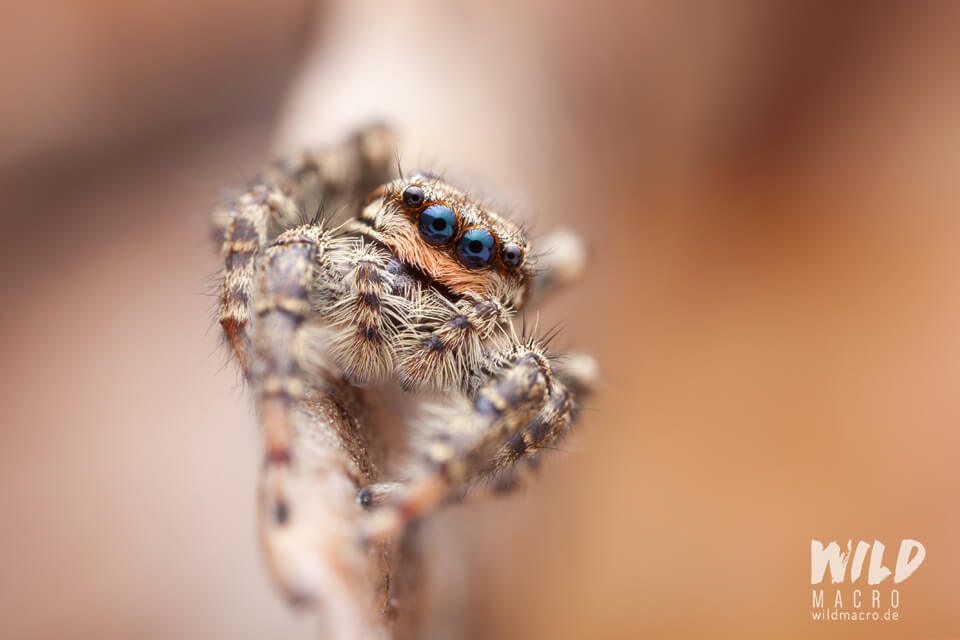


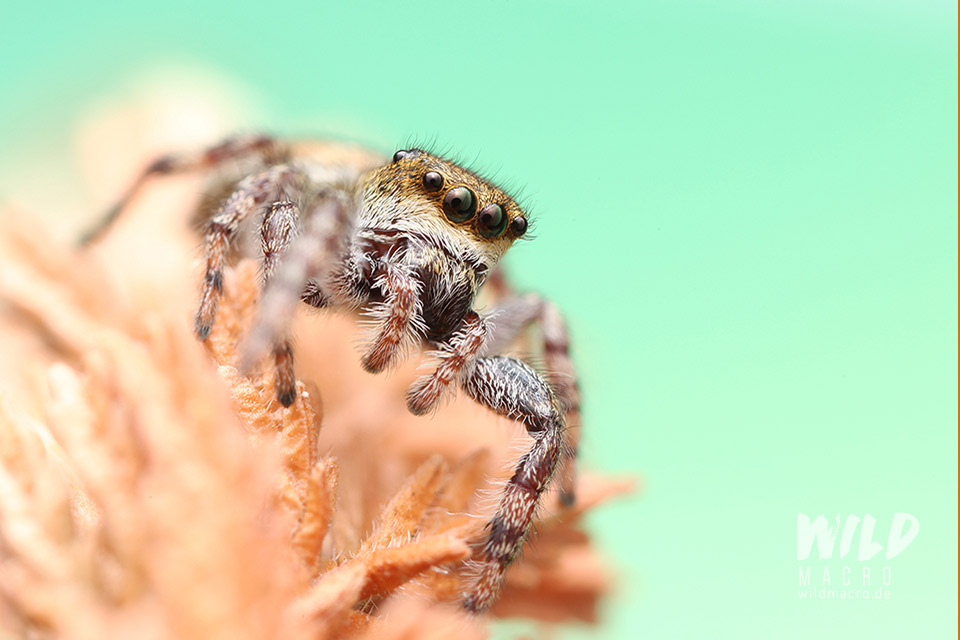

Sign up for the newsletter mailing list & free ebook

Did you enjoy these tips and want to learn more or improve your macro photography skills?
Stay up to date with new blog posts, reviews and tutorial- and ebook-releases.
Sign up below to get notified when the free edition of my ebook
‘How to master spider & insect macro photography’ is ready for download.



Flo
Posted at 10:36h, 01 JuneHallo,
super Auflösung bei deinen Fotos.
Ich muss dir aber in einem Punkt wieder sprechen. Mit natürlichem Licht ist es durchaus möglich solche Spinnen zu knipsen – macht es auch schöner, nicht das Blitzlicht in den Augen zu sehen.
Danke trotzdem für die super Aufnahmen.
wildmacro-chris
Posted at 12:59h, 02 JuneHallo Flo, danke für dein Feedback. Es ist absolut möglich mit natürlichem Licht (Spring-)Spinnen und andere Insekten zu fotografieren, da hast du recht – daher schreib ich auch ‘almost impossible’ – das war aber tatsächlich mehr auf die Geschwindigkeit/Beweglichkeit dieser Motive bezogen. Da wird es dann schon schwer mit natürlichem Licht, wenn man einen solchen Abbildungsmaßstab erreichen will. Halten die Spinnen relativ still, ist das natürlich absolut machbar.
Peter
Posted at 21:13h, 16 FebruaryTrying to signup your newsletter but keep getting an error every time. Deleted the cache and refreshed the page but…?